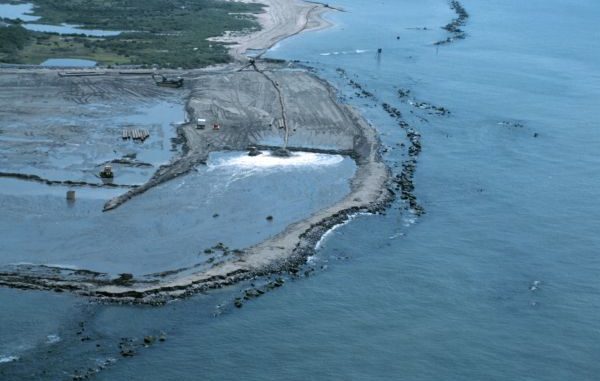
CPRA plans to spend $668 million on coastal restoration in upcoming fiscal year
State officials heard concerns over fresh water diversions and future local development as the state presented its annual plan for coastal restoration for the 2014-15 fiscal year that starts July 1.
According to a report in the Houma Daily Courier, the meeting held in Thibodaux Wednesday night also featured public comment on a barrier island project planned off Terrebonne Parish as part of BP’s early restoration money.
The state Coastal Protection and Restoration Authority plans to spend some $668 million on coastal restoration during the fiscal year.
About $416 million of that is devoted to construction. Another $134 million will be spent on engineering and planning for various projects.
Some of the projects in planning are fresh water diversions meant to stem the intrusion of saltwater and restore marshes through silting. The plan includes some $21 million over the next three years toward increasing the flow of fresh water from the Atchafalaya River into portions of Terrebonne Parish. The project is projected save 9,600 acres of wetlands. It’s in the planning phases.
The state is also investing millions into planning much larger sediment diversions from the Mississippi River into wetlands on both sides of the Mississippi River south of New Orleans.
But the diversions were a point of contention Wednesday.
“You change the water, the shrimp might not be home here anymore, and I promise people are going to be looking for work,” said Terry Parfait, a shrimper from Dulac.
Boat captain George Ricks, who is head of the Save Louisiana Coalition, an organization that opposes the diversions, presented research he claims show such diversions will initially destroy wetlands and harm a wide range of aquatic creatures, including some species that are federally protected.
“It will cause socioeconomic hardship to those involved in the commercial and recreational fishing industries,” Ricks said, arguing there is more certainty in replenishing wetlands through sediment dredging projects.
On such project that will affect areas east of Lafourche is the long-distance sediment pipeline project, which is scheduled to go to construction in the coming fiscal year.
State officials have disputed claims the diversions will cause significant harm to local fisheries.
Some $90 million of the authority’s budget will be contributed toward the local Morganza-to-the-Gulf levee system. Fueled by a mixture of local tax dollars, state assistance and federal grants, the local levee authority is continuing to build what it hopes will be the footprint of the federal Morganza system. The $10 billion system is awaiting the approval of Congress.
Also included in the fiscal year plan is phase two of the Caminada Headland Restoration Project. Phase one of that project is under construction and will create about 303 acres of beach and dune along a 6-mile stretch.
Since 2008, the state has spent more than $2.1 billion on restoration efforts with money originating from various local, state and federal sources. The state has a $50 billion plan to stem land loss in the state over the next century.
Houma developer Ronnie Shaw asked the state to give more clarity in areas other than wetland loss for development over the next decades.
“We need to know how high we should build our roads … How much are we going to subside in 50 years, 75 years?” Shaw asked.
State officials haven’t addressed that issue.
The meeting was also to seek comment on recently proposed projects planned through BP’s early restoration dollars stemming from its 2010 oil spill and the environmental impact statement that accompanied the proposed projects.
Those projects include barrier island restorations that officials say will benefit Terrebonne and Lafourche.
About $318 million will be used to restore four barrier islands: Whiskey Island off Terrebonne Parish, Cheniere Ronquille just east of Lafourche Parish, Shell Island off Plaquemines Parish and North Breton Island off Plaquemines and St. Bernard parishes.
The environmental impact statement can be found online at www.gulfspillrestoration.noaa.gov.
A 60-day public comment period on the early restoration money runs through Feb. 4.
The CPRA fiscal year 2015 plan can be found at: http://coastal.la.gov/annualplan/.
The public comment period of the fiscal year plan runs through Feb. 19.
EDITOR’S NOTE: Houma Daily Courier Staff Writer Xerxes Wilson filed this report.


